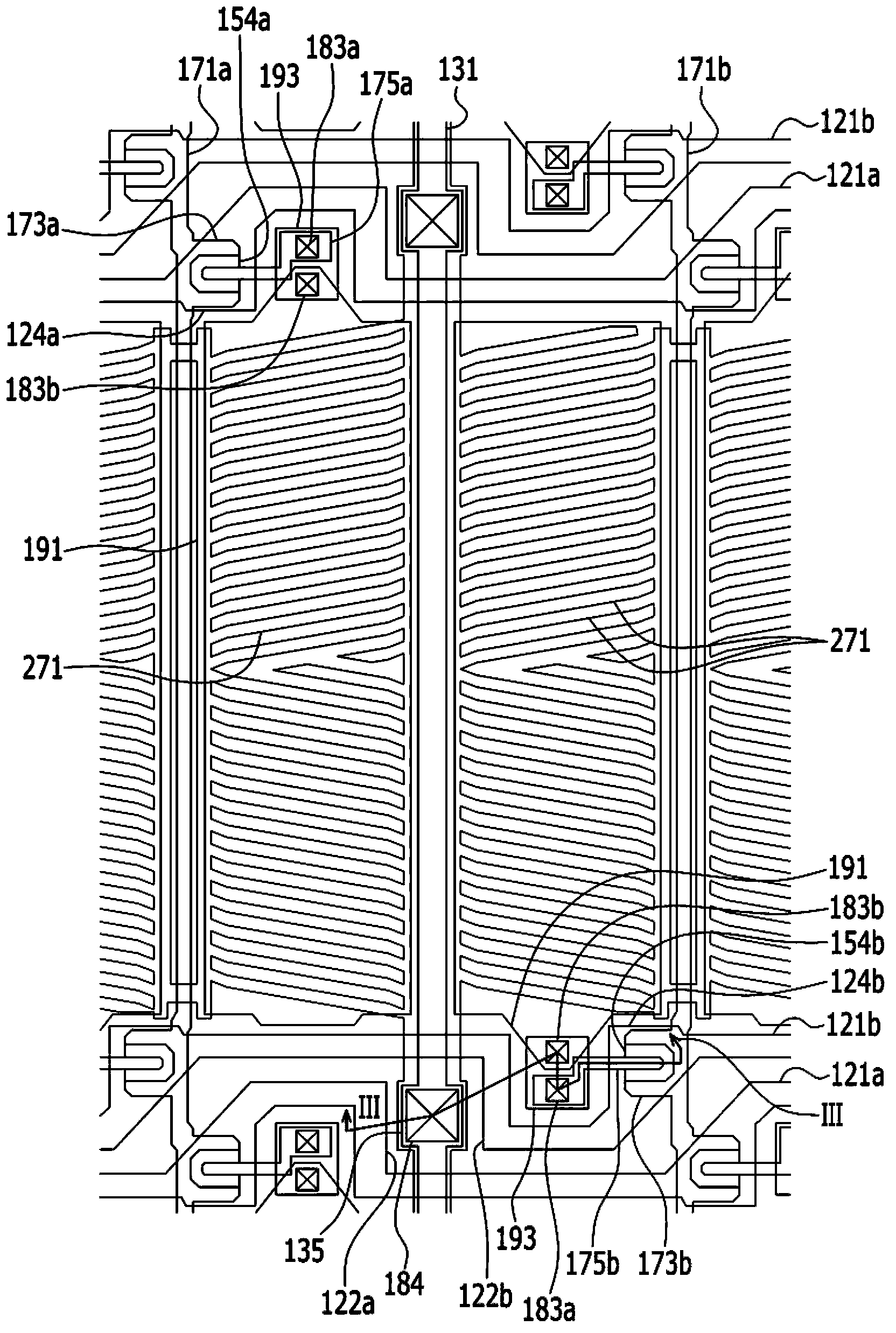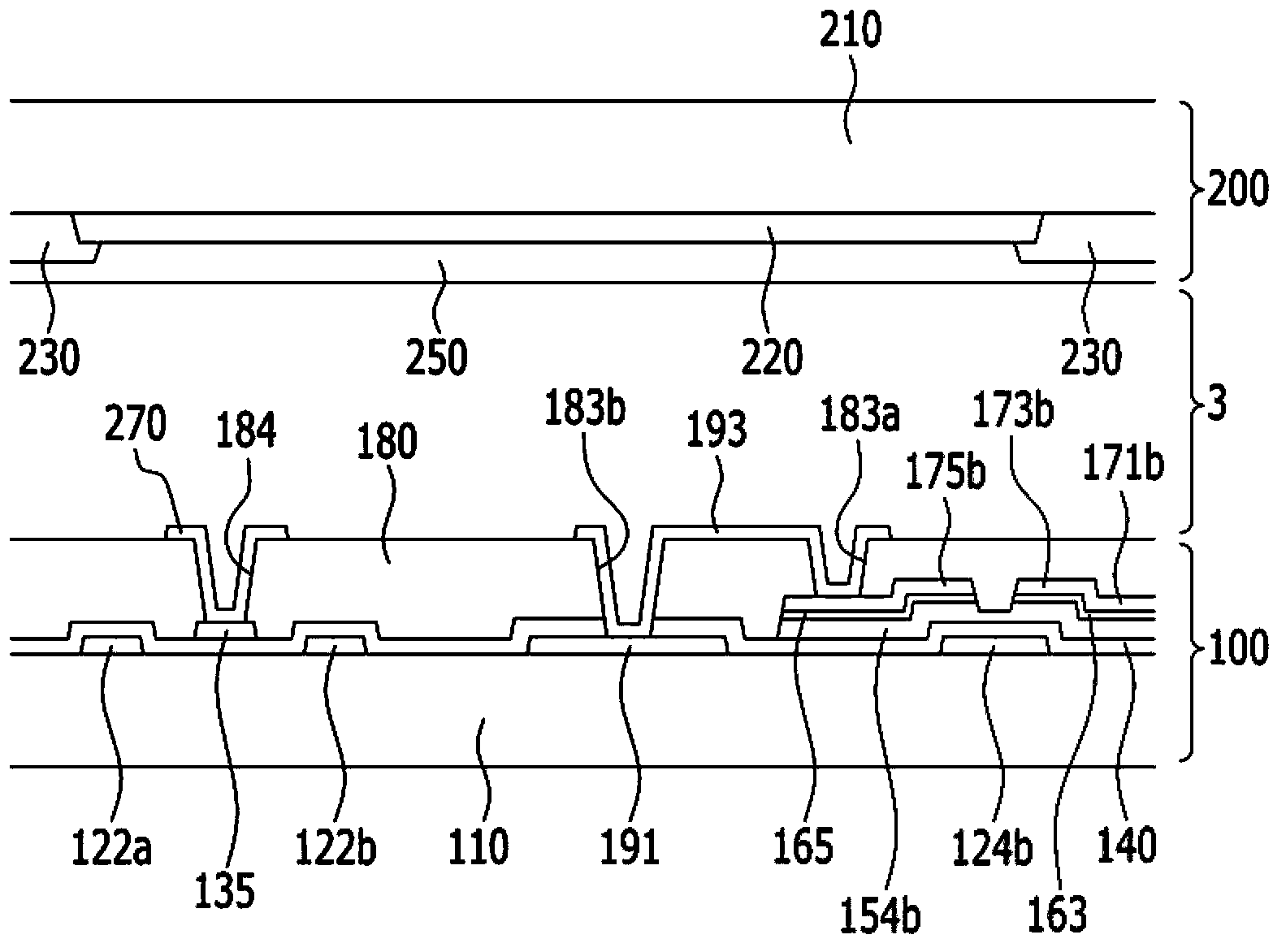Liquid crystal display
A liquid crystal display, pixel electrode technology, applied in the direction of instruments, nonlinear optics, optics, etc., can solve the problems of increasing the manufacturing cost of liquid crystal display, common voltage transmission line and gate line short circuit, optical transmittance reduction, etc.
- Summary
- Abstract
- Description
- Claims
- Application Information
AI Technical Summary
Problems solved by technology
Method used
Image
Examples
Embodiment Construction
[0026] In the following, the present invention will be described more fully with reference to the accompanying drawings, in which exemplary embodiments according to the teachings of the invention are shown. As those skilled in the art would realize, from the present disclosure, the described embodiments may be modified in various different ways, all without departing from the spirit or scope of the teachings of the present invention.
[0027] In the drawings, the thickness of layers, films, panels, regions, etc., are generally exaggerated for clarity. Like reference numerals refer to like elements throughout the specification. It will be understood that when an element such as a layer, film, region, or substrate is referred to as being "on" another element, it can be directly on the other element or intervening elements may also be present. In contrast, when an element is referred to as being "directly on" another element, there are no intervening elements present.
[0028] ...
PUM
 Login to View More
Login to View More Abstract
Description
Claims
Application Information
 Login to View More
Login to View More - R&D
- Intellectual Property
- Life Sciences
- Materials
- Tech Scout
- Unparalleled Data Quality
- Higher Quality Content
- 60% Fewer Hallucinations
Browse by: Latest US Patents, China's latest patents, Technical Efficacy Thesaurus, Application Domain, Technology Topic, Popular Technical Reports.
© 2025 PatSnap. All rights reserved.Legal|Privacy policy|Modern Slavery Act Transparency Statement|Sitemap|About US| Contact US: help@patsnap.com



